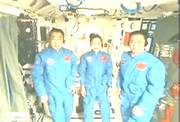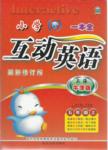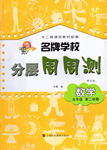题目内容
June 11,2013 was another big day for Chinese space exploration. Shenzhou X, China’s fifth manned spacecraft, was sent into space. Three astronauts, Nie Haisheng, 49, Zhang Xiaoguang, 47, and Wang Yaping, 33, stayed in space for 15 days.
Tiangong-1 is China’s first space module(舱). It was sent into space in 2011. It will be developed into a large space station around 2020. A space station is a lab for scientific studies.Shenzhou X performed its first docking(对接)with Tiangong-1 on June 13. It docked twice during the 15 days.
The US, Russia, Japan, Canada and Europe are working together on the International Space Station (ISS).China wanted to join the ISS but was refused by the US. China decided to build its own space station.
Shenzhou X flew around the Tianggong-1 lab for the first time. This was to make sure that spacecraft could dock from more than just one direction. The astronauts carried out repair work and did experiments on the Tiangong-1.
Teaching from space
Wang Yaping, China’s second woman astronaut, taught high school and primary school students about space science. Wang talked about how things move in a micro-gravity(微重量)environment. This helped the students better understand some physics ideas, like Newton’s Law. The lessons aimed to encourage more students to learn about the universe and science.
Life up in space
The three astronauts followed a work and rest schedule(作息时间)that is similar on the Earth. They had Chinese dishes, such as Kung Pao Chicken and fried rice. The food was kept in special bags. At the time of the Dragon Boat Festival, they had Zongzi.

小题1: Tiangong-1 is _______ which was sent into space in 2011.
小题2: China decided to build its own space station because________.
小题3:Wang Yaping taught the lesson to encourage students to________.
小题4:From the last paragraph, we can learn that the three astronauts _______.
小题5: According to the passage, which of the following is not right?
Tiangong-1 is China’s first space module(舱). It was sent into space in 2011. It will be developed into a large space station around 2020. A space station is a lab for scientific studies.Shenzhou X performed its first docking(对接)with Tiangong-1 on June 13. It docked twice during the 15 days.
The US, Russia, Japan, Canada and Europe are working together on the International Space Station (ISS).China wanted to join the ISS but was refused by the US. China decided to build its own space station.
Shenzhou X flew around the Tianggong-1 lab for the first time. This was to make sure that spacecraft could dock from more than just one direction. The astronauts carried out repair work and did experiments on the Tiangong-1.
Teaching from space
Wang Yaping, China’s second woman astronaut, taught high school and primary school students about space science. Wang talked about how things move in a micro-gravity(微重量)environment. This helped the students better understand some physics ideas, like Newton’s Law. The lessons aimed to encourage more students to learn about the universe and science.
Life up in space
The three astronauts followed a work and rest schedule(作息时间)that is similar on the Earth. They had Chinese dishes, such as Kung Pao Chicken and fried rice. The food was kept in special bags. At the time of the Dragon Boat Festival, they had Zongzi.

小题1: Tiangong-1 is _______ which was sent into space in 2011.
| A.a space module | B.a manned spacecraft |
| C.a space station | D.a space lab |
| A.China was very rich |
| B.the US refused China to join the ISS |
| C.the astronauts wanted to stay there |
| D.Chinese scientists wanted to do experiment in space |
| A.become the next Newton |
| B.experience micro-gravity |
| C.know more about the life of astronauts |
| D.learn more about the universe and science |
| A.had a different time schedule in space |
| B.cooked Chinese food for dinner |
| C.celebrated Dragon Boat Festival by having Zongzi |
| D.slept in special sleeping bags |
| A.Among the three astronauts in China’s fifth manned spacecraft, Nie Haisheng is the oldest. |
| B.In about 2020, Tiangong-1 will become a space station where astronauts can do science research. |
| C.It is true that Shenzhou X could dock with Tiangong-1 from only one direction. |
| D.In space, Wang Yaping taught the students how things go in a micro-gravity environment. |
小题1:A
小题2:B
小题3:D
小题4:C
小题5:C
试题分析:这篇短文给我们讲述的是2013年6月11号,神州十号宇宙飞船载着三名宇航员发射进入太空,和天宫一号实现了对接,王亚平还进行了太空授课。文中还提到了宇航员在太空的生活。
小题1:细节理解题。根据短文第二段中Tiangong-1 is China’s first space module(舱). It was sent into space in 2011.可知,天宫一号是中国的第一个太空舱,它是2011年被发射进入太空的。故选A。
小题2:细节理解题。根据短文第三段中China wanted to join the ISS but was refused by the US. China decided to build its own space station.可知,中国想要加入国际太空站,但是被美国拒绝了,因此中国决定建立自己的空间站。故选B。
小题3:细节理解题。根据短文中Teaching from space 中The lessons aimed to encourage more students to learn about the universe and science.可知,王亚平在太空进行了授课,目的是鼓励更多的学生了解宇宙和科学。由此可知选D。
小题4:细节理解题。根据短文的最后一部分Life up in space 中的内容At the time of the Dragon Boat Festival, they had Zongzi. 可知,在端午节的时候,三名宇航员吃了粽子。故选C。根据The three astronauts followed a work and rest schedule(作息时间)that is similar on the Earth可知A不对;根据The food was kept in special bags可知B不对;D选项在文中没有提到。
小题5:推理判断题。根据Three astronauts, Nie Haisheng, 49, Zhang Xiaoguang, 47, and Wang Yaping, 33,可知,聂海胜是三名宇航员中年龄最大的,故A表述正确;根据It will be developed into a large space station around 2020可知B的表述是正确的;根据Wang talked about how things move in a micro-gravity(微重量)environment可知D的表述是正确的;根据This was to make sure that spacecraft could dock from more than just one direction可知C的说法是错误的。故选C。

练习册系列答案
 互动英语系列答案
互动英语系列答案 名牌学校分层周周测系列答案
名牌学校分层周周测系列答案
相关题目


